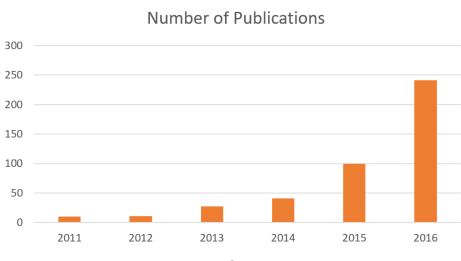In the past months, I am shocked by the progress of artificial intelligence (mostly implemented by deep learning). In March 2016, AlphaGo won Lee Sedol (李世石) in Weiqi (go). I had mixed feelings, excited, sad, and some fear. Around new year of 2017, AlphaGo won 60 games in a row against numerous top professional Weiqi players in China, Korea and Japan, including #1 Ke Jie. There is no doubt AlphaGo is at least a level better than top human player. It’s interesting to see that the way how people call AlphaGo has changed from “dog” to “Teacher Ah”, reflecting the change of our attitude toward artificial intelligence.
Game is not the only area where AI shocked me. Below are some area AI / deep learning has done extremely well:
- convert text to handwriting: Try yourself at http://www.cs.toronto.edu/~graves/handwriting.html Maybe in the future you can use AI to write your greeting cards.
- Apply artistic style to drawings. Check out https://www.youtube.com/watch?v=Uxax5EKg0zA and https://www.youtube.com/watch?v=jMZqxfTls-0
- Fluid simulation
- Generate a text description of an image
- Real time facial expression transfer https://www.youtube.com/watch?v=mkI6qfpEJmI
- Language translation
- Handwriting recognition (try it here: http://cs.stanford.edu/people/karpathy/convnetjs/demo/mnist.html) This is not new progress but still worth mentioning
- Medical diagnosis
- And many more. I will update this list constantly
- Track “Deep Learning” publications using Stork
- Subscribe youtube channel Two Minute Papers (https://www.youtube.com/user/keeroyz). It contains many excellent short videos on the application of deep learning
- Play it here: http://playground.tensorflow.org/
- A few examples here: http://cs.stanford.edu/people/karpathy/convnetjs/
- I am going to take Udacity’s deep learning class at https://www.udacity.com/course/deep-learning-nanodegree-foundation–nd101



